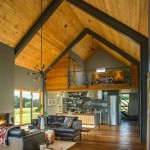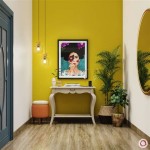How to Decorate a Small Children's Room
Decorating a small children's room presents a unique set of challenges and opportunities. The goal is to create a space that is functional, stimulating, and comfortable, all while maximizing the limited square footage. Careful planning, strategic furniture selection, and thoughtful consideration of storage solutions are paramount. The following article outlines key strategies for effectively decorating a small children's room, transforming it into a haven for play, rest, and learning.
Maximizing Vertical Space
One of the most effective strategies for decorating a small room is to utilize vertical space. Walls are often underutilized areas that can be transformed into functional storage and display areas. This approach minimizes the footprint required for furniture on the floor, creating a more open and spacious feel.
Shelving units are an essential component of maximizing vertical space. Install shelves at varying heights to accommodate different types of items, such as books, toys, and decorative objects. Consider using floating shelves, which appear to recede into the wall, further contributing to a sense of lightness and openness. These shelves are also relatively easy to install and can be customized to fit the specific dimensions of the room.
Wall-mounted storage solutions, such as hanging organizers, are another effective way to keep clutter off the floor. These organizers can be used to store clothing, shoes, or small toys. Select organizers that are made from durable and easy-to-clean materials. Options include canvas, mesh, or plastic. Ensure the organizers are securely mounted to the wall to prevent accidents.
Loft beds offer a significant advantage in small rooms by effectively using vertical space. By elevating the bed, the area underneath can be repurposed for a variety of functions, such as a desk, a play area, or additional storage. Loft beds are particularly well-suited for older children and teenagers. When selecting a loft bed, ensure it meets safety standards and that the child is old enough and responsible enough to use it safely. An alternative would be a bunk bed if there are two children sharing the same room.
Wall decals and murals can also contribute to the overall design of the room without taking up any physical space. Choose themes that are age-appropriate and stimulating for the child. Decals are relatively easy to apply and remove, making them a versatile option for decorating a children's room. Murals can create a more dramatic effect, but they require more planning and effort to install.
Consider a pegboard system for versatile wall storage. This system allows you to customize the layout of shelves, hooks, and containers to suit the child’s specific needs. Pegboards are especially useful for storing craft supplies, art materials, or small toys. This modular storage solution can be easily adapted as the child grows and their needs change.
Strategic Furniture Selection
Choosing the right furniture is crucial in a small children's room. Opt for multi-functional pieces that can serve multiple purposes, minimizing the number of items needed. Size and scale are important considerations; select furniture that is appropriately sized for the room and the child. Avoid bulky or oversized pieces that can overwhelm the space.
Beds with built-in storage are a valuable asset in a small room. These beds often feature drawers underneath the mattress for storing clothing, bedding, or toys. Trundle beds, which have a pull-out bed underneath, are another space-saving option for accommodating sleepovers. Ensure the drawers are sturdy and easy to open and close.
A desk with built-in storage can serve as a workspace for homework, art projects, and other activities. Look for desks with drawers, shelves, or cubbies to keep supplies organized and within reach. A fold-down desk can be a practical option for rooms where space is particularly limited.
Consider using ottomans with storage. These serve as seating and a place to conceal toys, blankets, or other items. Padded benches with storage are also a viable option, providing both seating and storage in a single piece of furniture.
Nesting tables are a practical solution for creating temporary surfaces when needed. These tables can be stacked together when not in use, saving valuable floor space. They can be used for snacks, games, or activities.
When selecting furniture, prioritize durability and safety. Choose pieces that are made from sturdy materials that can withstand the wear and tear of daily use. Ensure that all furniture is free of sharp edges and potential hazards. Securely anchor tall furniture to the wall to prevent it from tipping over.
Effective Storage Solutions
Effective storage solutions are essential for maintaining order and minimizing clutter in a small children's room. Utilize every available space for storage, including under the bed, in closets, and on walls. Implement a system for organizing belongings and encourage the child to participate in the process.
Clear plastic bins are ideal for storing toys, clothing, and other items. The transparent design allows you to easily identify the contents without having to open each bin. Label each bin clearly to facilitate organization and encourage the child to put things back in their designated place.
Woven baskets and fabric bins can add texture and visual appeal to the room while providing storage for various items. These bins are particularly useful for storing stuffed animals, blankets, or books. Choose baskets and bins that are lightweight and easy for the child to handle.
Closet organizers can maximize the storage capacity of a small closet. Adjustable shelving units, hanging rods, and drawer systems can help to keep clothing and other items neatly organized. Utilize the space on the closet door by installing over-the-door organizers for shoes, accessories, or small toys.
Toy storage bags or mats provide a convenient way to contain small toys, such as building blocks or toy cars. These bags can be easily gathered up and stored away when not in use, minimizing clutter on the floor.
Consider using a toy rotation system to prevent the room from becoming overwhelmed with toys. Store some of the toys in a less accessible location and rotate them periodically. This can help to keep the child engaged and prevent them from becoming bored with their toys.
Labeling is a vital component of any effective storage system. Clearly label all bins, boxes, and shelves to indicate their contents. This will help to keep the room organized and make it easier for the child to find what they need. Use labels that are easy to read and understand.

14 Small Kids Room Design Ideas Storage Tips Extra Space

10 Awesome Diy Ideas For Your Kid S Room

Top Kids Bedroom Furniture Ideas Design Cafe

Small Kids Room Design Ideas Ashley

Kids Bedroom Storage Ideas For Small Spaces Designcafe

Designing For The Kids Making Room Children

41 Small Yet Cool And Functional Kids Rooms Digsdigs

75 Kids Room Ideas You Ll Love December 2025 Houzz

Small Kids Room Design Ideas Ashley

10 Kids Room Design Ideas







